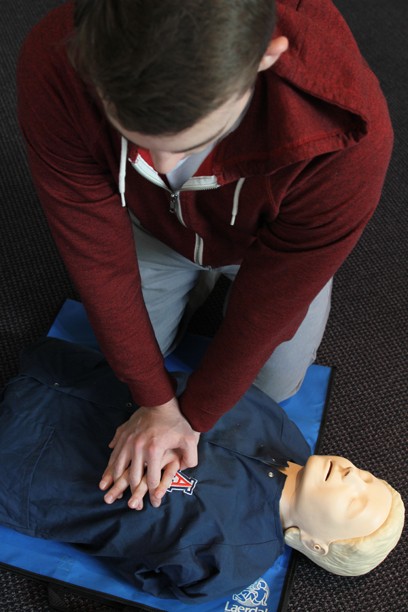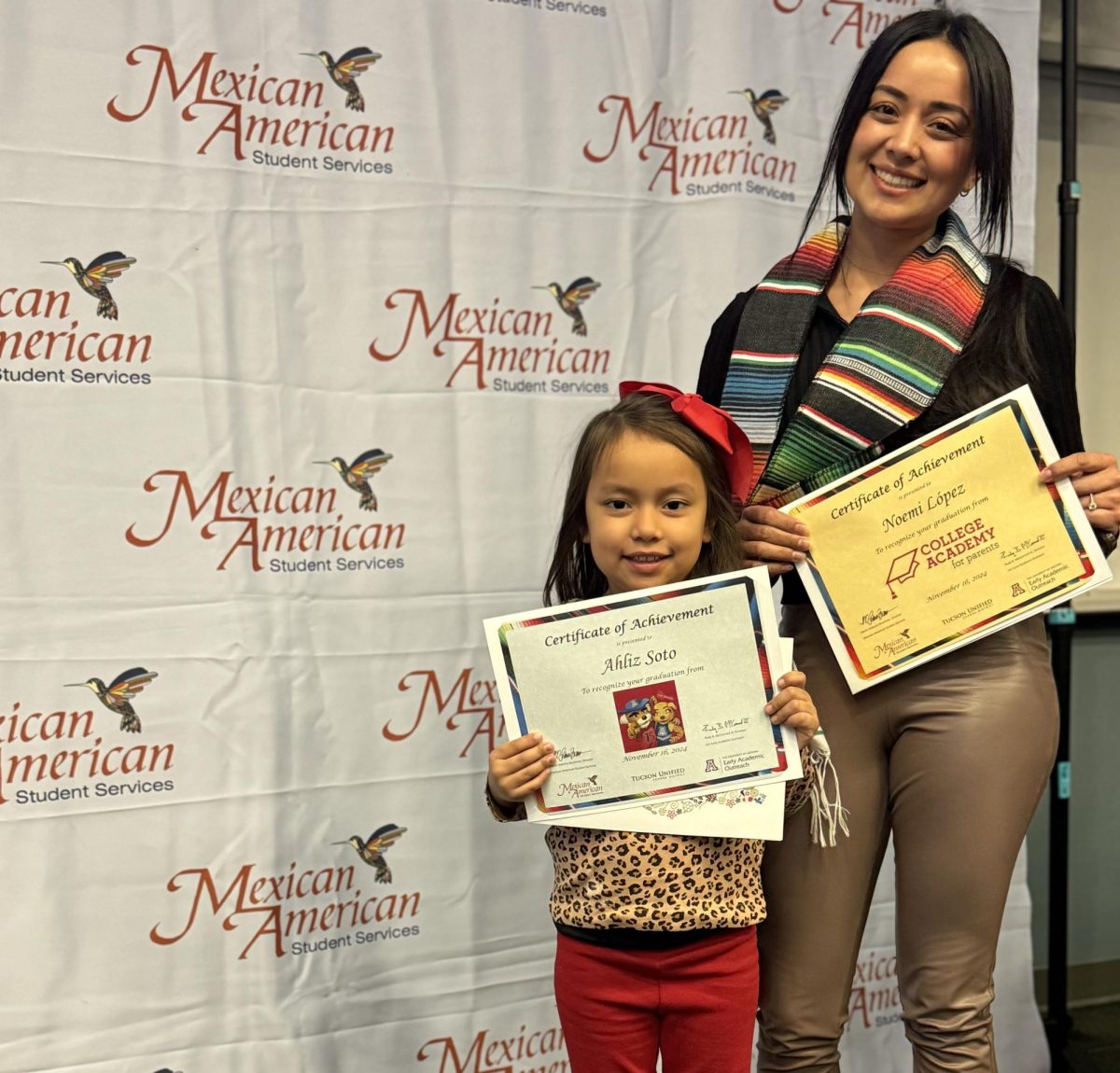During the halftime of the UA-UCLA basketball game on Thursday night, the inventors of the Continuous Chest Compression CPR method will hold a CPR competition between students, faculty, the mayor of Tucson and cardiac arrest survivors.
ZonaZoo members will compete against Dr. Karl Kern, chief of cardiology at the UA College of Medicine and an inventor of the new CPR method, Dr. Steve Goldschmid, dean of the UA College of Medicine in Tucson, Karen Mlawsky, head of the UA Medical Center, Mayor Jonathan Rothschild, Rob Charles, a cardiac arrest survivor, and other community members to “save” a mannequin by using the continuous chest compression CPR method.
“We are excited to have the opportunity to do this and teach 14,000 people, and hopefully, since it’s on TV, a couple more people, because it’s simple to do and easy to save a life,” said Dr. Gordon Ewy, director of the UA Sarver Heart Center and also an inventor of the new method.
The halftime competition will accompany a game day campaign that urges the public to learn the new CPR method. Each attendee will receive a “Go Cats” card upon entering McKale Center that explains the three main steps of the CPR method on the back.
This is only one of the ways the Sarver Heart Center is encouraging the general public to learn about the new CPR technique. At the UA, a club of medical students dedicates its time and energy to reaching out to the community and offering free CPR training sessions. The Resuscitation Education and CPR Training Group, REACT, offers training events monthly at local libraries, schools and businesses throughout Tucson. Club members teach the CPR method in 30-minute sessions, using mannequins.
“It’s such an easy thing, you don’t need to be certified to do it. It’s three simple steps: check, call, compress,” said Omar Meziab, a member of the REACT group. “We teach you the whole thing, and at the end of it, we consider you trained.”
Ewy and Kern invented the new continuous chest compression method of CPR when they found that continuous chest compression, rather than CPR accompanied with mouth-to-mouth “rescue breaths,” raised the survival rates of people who experience cardiac arrest. Not only did the new method almost double the survival rates of patients, but it also significantly raised the likelihood that a bystander will try CPR on a victim of cardiac arrest, as stated on the Sarver Heart Center website.
“This can happen to anyone at any age. It’s a skill that really everyone should know,” said Katie Maass, director of communications and public education at the Sarver Heart Center.
Currently, the new method has been adopted by firefighters and EMTs across the nation and continues to be taught to the public. People can learn this new CPR method by attending any of the free local trainings or watching a six-minute video online that covers all of the basic steps.
“Somebody said, ‘Well, if you’re going to make a video for YouTube, it’s got to be short, a couple minutes, got to be a little quirky,’” Ewy said. “Well, this is two old gray-haired men talking about compression-only CPR for six minutes, and we’ve had over 8 million hits.”









